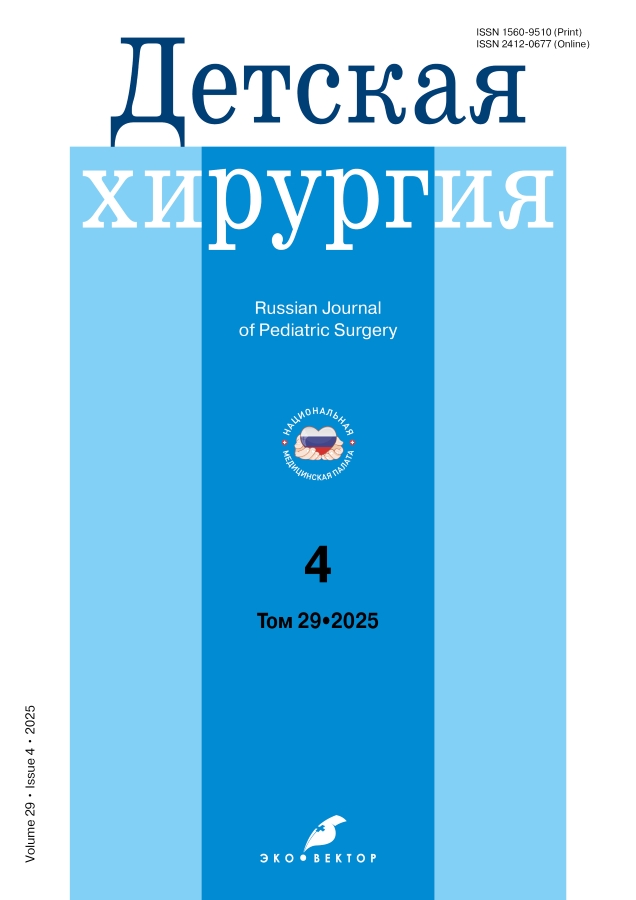Subungual exostosis of the toes in children and adolescents: a clinical experience
- Authors: Trankovskiy S.E.1,2, Grabovsky M.B.1, Alpatov V.N.1, Protcko V.G.3, Akhpashev A.A.2, Isaev V.Y.1, Kuranova S.V.1
-
Affiliations:
- St. Vladimir Children’s City Clinical Hospital
- Federal Research and Clinical Center of Specialized Medical Care and Medical Technologies
- Peoples’ Friendship University of Russia
- Issue: Vol 29, No 4 (2025)
- Pages: 272-278
- Section: Original Study Articles
- Submitted: 01.04.2025
- Accepted: 25.07.2025
- Published: 26.08.2025
- URL: https://jps-nmp.ru/jour/article/view/860
- DOI: https://doi.org/10.17816/ps860
- EDN: https://elibrary.ru/KQQFPE
- ID: 860
Cite item
Abstract
BACKGROUND: Subungual exostosis, or bone-cartilaginous overgrowth in the area of toe nail phalanx injures soft tissues, causes painful sensations and impedes the nail plate growth. Most often, subcutaneous exostosis is diagnosed, by mistake, as ingrown toe nail, especially when the pathology is localized in the area of the first toe.
AIM: To evaluate diagnostic and curative outcomes in patients with subungual exostosis of the toe. To identify criteria for the diagnostics of osteochondromas with subungual location in children and adolescents. To define differential diagnostics with other lesions of toe nail phalanges.
METHODS: 14 children and adolescents with osseocartilaginous formations of the subungual plate of the toe (subungual exostosis) were treated at the orthopedic and traumatologic department No 2 in the St. Vladimir Clinical Hospital in Moscow in 2023–2024. Before admission to our hospital, patients were diagnosed with ingrown toe nails and were treated accordingly, including surgical interventions, in other medical settings.
RESULTS: All patients operated in our hospital were diagnosed with “osteochondroma” as a result of histological examination and pathomorphological conclusion. Two-year postoperative follow-up revealed no growth recurrence and other complications, what allowed us to make a number of general comments. In particular, in the case of recurrences of ingrown toenails after surgical treatment, an X-ray of the area of interest should be performed, at least, in two mutually perpendicular projections. Subungual exostosis can be suspected and diagnosis can be verified by X-ray examination of fingers. In order to define a full volume of the formation, computed tomography of the area of interest in the preoperative period was done.
CONCLUSION: The rarity of subungual exostosis is relative―much depends on the doctor’s knowledge and his alertness to this pathology. Radical surgical removal of subungual exostosis is the only correct and effective technique for treating bone and cartilage overgrowth. Only complete removal of the formation prevents the recurrence of the disease.
Full Text
About the authors
Sergey E. Trankovskiy
St. Vladimir Children’s City Clinical Hospital; Federal Research and Clinical Center of Specialized Medical Care and Medical Technologies
Author for correspondence.
Email: doctseort@yandex.ru
ORCID iD: 0000-0002-7118-8528
SPIN-code: 5017-4839
Россия, 1/3 Rubtsovsko-Dvortsovaya st, Moscow, 107014; Moscow
Mikhail B. Grabovsky
St. Vladimir Children’s City Clinical Hospital
Email: orthoped63@yandex.ru
MD, Cand. Sci. (Medicine)
Россия, MoscowValery N. Alpatov
St. Vladimir Children’s City Clinical Hospital
Email: v.alpatov@66mail.ru
MD, Cand. Sci. (Medicine)
Россия, MoscowVictor G. Protcko
Peoples’ Friendship University of Russia
Email: 89035586679@mail.ru
ORCID iD: 0000-0002-5077-2186
MD, Dr. Sci. (Medicine)
Россия, MoscowAlexander A. Akhpashev
Federal Research and Clinical Center of Specialized Medical Care and Medical Technologies
Email: akhpashev@gmail.com
ORCID iD: 0000-0002-2938-5173
SPIN-code: 9965-1828
MD, Cand. Sci. (Medicine)
Россия, MoscowVsevolod Y. Isaev
St. Vladimir Children’s City Clinical Hospital
Email: isaevvy1@zdrav.mos.ru
Россия, Moscow
Sofya V. Kuranova
St. Vladimir Children’s City Clinical Hospital
Email: kuranovasv@zdrav.mos.ru
Россия, Moscow
References
- Letts M, Davidson D, Nizalik E. Subungual exostosis: diagnosis and treatment in children. J Trauma. 1998;44(2):346–349. doi: 10.1097/00005373-199802000-00020
- Rogozhin DV, Bulycheva IV, Kushlinsky NE, et al. Osteochondroma in children and adolescents. Archive pathology. 2015;77(3):37–40. doi: 10.17116/patol201577337-40 EDN: UJXCEV
- Choi JH, Ro JY. The 2020 WHO classification of tumors of bone: an updated review. Adv Anat Pathol. 2021;28(3):119–138. doi: 10.1097/PAP.0000000000000293
- Li H, Li H, Qi X, et al. Clinical diagnosis and treatment of subungual exostosis in children. Front Pediatr. 2022;10:1075089. doi: 10.3389/fped.2022.1075089
- Kas’yan AR, Sataev VU, Alyangin VG. A. Winograd surgery for ingrown nails in children. Bashkortostan medical journal. 2019;14(4):53–57. EDN: SQQFSQ
- Malkov IS, Korobkov VN, Filippov VA, Tagirov MR. Relapses of ingrown toenail: causes and treatment features. Ambulatory surgery. 2021;18(1):135–143. doi: 10.21518/1995-1477-2021-18-1-135-143 EDN: TIRRTO
Supplementary files












